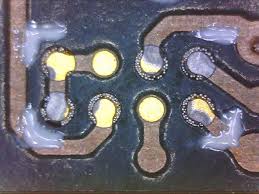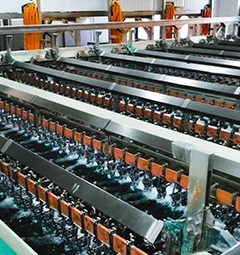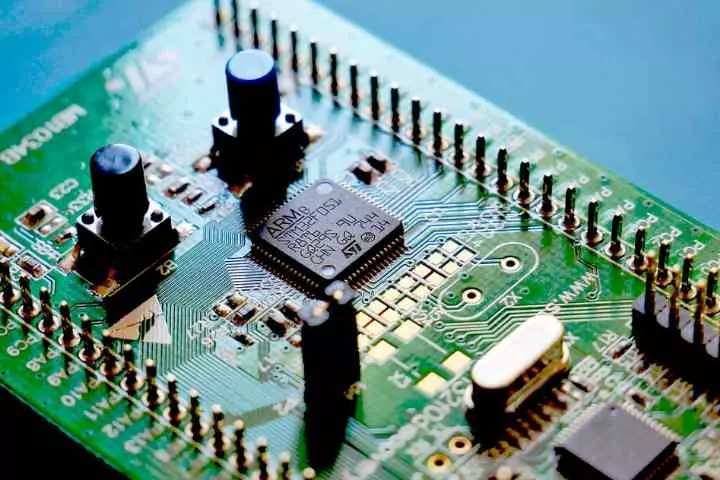If you're an electrical engineer dealing with printed circuit boards (PCBs), you've likely encountered or heard of the notorious "black pad" issue in Electroless Nickel Immersion Gold (ENIG) surface finishes. Black pad is a defect that can lead to poor solderability and unreliable connections, often causing failures in critical applications. So, how do you prevent ENIG black pad? The solution lies in strict process controls, careful material selection, and understanding the root causes like nickel corrosion and phosphorus content. In this blog, we'll dive deep into ENIG black pad causes, explore proven ENIG black pad prevention strategies, and provide actionable insights on controlling ENIG nickel corrosion, ENIG phosphorus content, and ENIG gold deposition control.
What Is ENIG Black Pad and Why Should Engineers Care?
ENIG is a popular surface finish for PCBs due to its excellent solderability, flat surface, and long shelf life. It involves depositing a layer of nickel over the copper pads, followed by a thin layer of gold to protect the nickel from oxidation. However, during this process, a defect known as black pad can occur. Black pad refers to the corrosion of the nickel layer, which appears as a dark, non-solderable surface under the gold layer. This defect compromises the integrity of solder joints, leading to weak connections or complete failures in electronic devices.
For electrical engineers, black pad is a critical concern because it can cause intermittent failures or complete breakdowns in high-reliability applications like aerospace, medical devices, and automotive electronics. Understanding ENIG black pad causes and implementing ENIG black pad prevention strategies are essential to ensure the reliability of your designs.

Root Causes of ENIG Black Pad: What Goes Wrong?
To prevent black pad, we must first understand why it happens. The primary culprit is ENIG nickel corrosion, which occurs during the immersion gold deposition process. Let's break down the key ENIG black pad causes:
- Nickel Corrosion During Gold Deposition: When gold is deposited onto the nickel layer, a galvanic reaction can occur if the process isn't tightly controlled. This reaction corrodes the nickel, forming nickel oxide or other compounds that manifest as black pad. If the gold bath is too aggressive or the nickel surface isn't properly prepared, corrosion accelerates.
- High Phosphorus Content in Nickel Layer: The ENIG phosphorus content in the nickel layer plays a significant role. Electroless nickel baths often contain phosphorus as a reducing agent, typically ranging from 6-12% by weight. If the phosphorus content is too high (above 10%), it can make the nickel layer more prone to corrosion during gold deposition, leading to black pad.
- Poor Gold Deposition Control: Inadequate ENIG gold deposition control can exacerbate the issue. If the gold layer is too thin (less than 0.05 micrometers), it may not adequately protect the nickel underneath. Conversely, an overly thick gold layer (above 0.1 micrometers) can increase the galvanic effect, accelerating nickel corrosion.
- Contaminants and Bath Chemistry Issues: Impurities in the nickel or gold baths, such as organic contaminants or improper pH levels, can disrupt the deposition process and contribute to black pad formation. For instance, a nickel bath with a pH outside the optimal range of 4.5-5.5 can lead to inconsistent plating.
Understanding these factors is the first step toward effective ENIG black pad prevention. As an engineer, knowing how each variable impacts the process allows you to work with your PCB manufacturer to mitigate risks.
ENIG Black Pad Prevention: Key Strategies for Engineers
Preventing black pad requires a multi-faceted approach that focuses on process optimization and material selection. Below are actionable ENIG black pad prevention strategies tailored for electrical engineers who want reliable PCB performance.
1. Optimize Nickel Bath Chemistry and Phosphorus Content
Controlling the ENIG phosphorus content in the nickel layer is critical. Aim for a phosphorus content between 7-9% by weight, as this range offers a good balance between corrosion resistance and solderability. High phosphorus levels (above 10%) increase the risk of ENIG nickel corrosion, while very low levels (below 6%) can make the nickel layer too brittle.
Work with your PCB supplier to monitor the nickel bath chemistry. Regular testing of the bath for pH (ideal range: 4.5-5.5), temperature (around 85-90°C), and phosphorus concentration can prevent deviations that lead to black pad. For instance, a study by the Institute of Circuit Technology found that maintaining phosphorus at 8% reduced black pad occurrences by over 30% in controlled tests.
2. Enhance Gold Deposition Control
Proper ENIG gold deposition control is vital to avoid galvanic corrosion of the nickel layer. The gold layer should be thick enough to protect the nickel but not so thick that it increases corrosion risk. Industry standards recommend a gold thickness of 0.05-0.1 micrometers (2-4 microinches). Thinner layers may expose the nickel to oxidation, while thicker layers can drive excessive galvanic reactions.
Ensure that the immersion gold bath operates at the correct temperature (around 80-85°C) and pH (4.5-5.0). Additionally, limit the immersion time to prevent over-deposition. Advanced PCB manufacturers often use automated systems to monitor these parameters, reducing human error.
3. Improve Surface Preparation and Cleanliness
Before nickel plating, the copper surface must be thoroughly cleaned to remove oxides, oils, and other contaminants. Any residue can interfere with nickel adhesion, leading to uneven plating and potential black pad issues. Micro-etching the copper surface with a sulfuric acid-hydrogen peroxide solution can enhance adhesion.
Similarly, after nickel plating, rinse the board with deionized water to remove any residual bath chemicals before gold deposition. Contaminants at this stage can trigger ENIG nickel corrosion. As an engineer, insist on strict cleanliness protocols when working with your PCB fabricator.
4. Monitor and Control Bath Life
Both nickel and gold baths degrade over time due to the buildup of byproducts and contaminants. An overused nickel bath can deposit a layer with inconsistent phosphorus content, while an aged gold bath may become too aggressive, corroding the nickel. PCB manufacturers should track the number of turnovers (the number of times the bath volume has been replenished) and replace baths after 5-10 turnovers, depending on the specific chemistry.
Ask your supplier for bath analysis reports to ensure that metal content, pH, and other parameters remain within specifications. For example, a nickel bath with a metal content below 4 g/L may produce defective plating, increasing black pad risk.
5. Select High-Quality Materials
Material selection plays a significant role in ENIG black pad prevention. Choose a nickel plating solution with a proven track record of stability and low corrosion risk. Some modern electroless nickel formulations are designed specifically to minimize black pad by incorporating stabilizers that reduce galvanic effects during gold deposition.
Additionally, ensure that the gold bath uses high-purity chemicals to avoid introducing contaminants. Working with reputable suppliers who provide detailed material datasheets can help you make informed decisions.

Testing and Validation for Black Pad Prevention
Even with the best process controls, validation is essential to confirm that your PCBs are free from black pad defects. Here are some testing methods electrical engineers can use or request from their manufacturers:
- Solderability Testing: Perform a solderability test per IPC-J-STD-003 standards to check if the ENIG finish wets properly. Poor wetting often indicates black pad or other surface issues.
- Cross-Sectional Analysis: Use a scanning electron microscope (SEM) to examine the nickel-gold interface for signs of corrosion or black pad. This destructive test can reveal issues that aren't visible on the surface.
- Phosphorus Content Measurement: Use energy-dispersive X-ray spectroscopy (EDS) to verify the ENIG phosphorus content in the nickel layer. Ensure it falls within the 7-9% range for optimal performance.
- Gold Thickness Measurement: Use X-ray fluorescence (XRF) to measure gold layer thickness and ensure it meets the 0.05-0.1 micrometer specification for ENIG gold deposition control.
Regular testing not only catches defects early but also helps identify trends or recurring issues in the manufacturing process. As an engineer, collaborating with your PCB supplier to establish a robust quality assurance program can save time and cost in the long run.
Case Study: Real-World Black Pad Prevention
Consider a real-world example from an automotive electronics project I was involved in a few years ago. Our team faced frequent solder joint failures in a batch of PCBs with ENIG finish. After investigation, we identified black pad as the root cause, linked to a high ENIG phosphorus content of 11% in the nickel layer. Working with the manufacturer, we adjusted the nickel bath to achieve an 8% phosphorus content and introduced stricter ENIG gold deposition control by limiting immersion time to 10 minutes at 82°C.
Post-adjustment, we conducted solderability tests on 100 boards and found a 95% pass rate compared to the initial 60%. Cross-sectional analysis confirmed the absence of nickel corrosion. This experience underscored the importance of process control and collaboration with fabricators to tackle ENIG black pad causes.
Collaborating with PCB Manufacturers for Success
As an electrical engineer, you may not directly control the ENIG plating process, but you can influence outcomes by specifying requirements and maintaining open communication with your PCB manufacturer. Provide detailed specifications for nickel and gold layer thicknesses, ENIG phosphorus content, and testing protocols. Request regular updates on bath conditions and quality control measures.
For high-reliability applications, consider visiting the manufacturing facility to observe the plating process firsthand. Seeing the setup and discussing challenges with the production team can reveal opportunities for improvement that might not surface in reports or emails.
Conclusion: Building Reliability with ENIG Black Pad Prevention
Black pad in ENIG finishes is a preventable defect if you understand the ENIG black pad causes and implement robust ENIG black pad prevention strategies. By focusing on controlling ENIG nickel corrosion, optimizing ENIG phosphorus content, and ensuring precise ENIG gold deposition control, electrical engineers can significantly reduce the risk of failures in their PCB designs. Collaborate closely with your manufacturers, insist on rigorous testing, and stay informed about material and process advancements.
Reliability starts with attention to detail. Whether you're designing for consumer electronics or mission-critical systems, taking proactive steps to prevent black pad will save you from costly rework and ensure your products perform as intended. Have you encountered black pad issues in your projects? Share your experiences or questions in the comments—we'd love to hear from you!

 ALLPCB
ALLPCB







